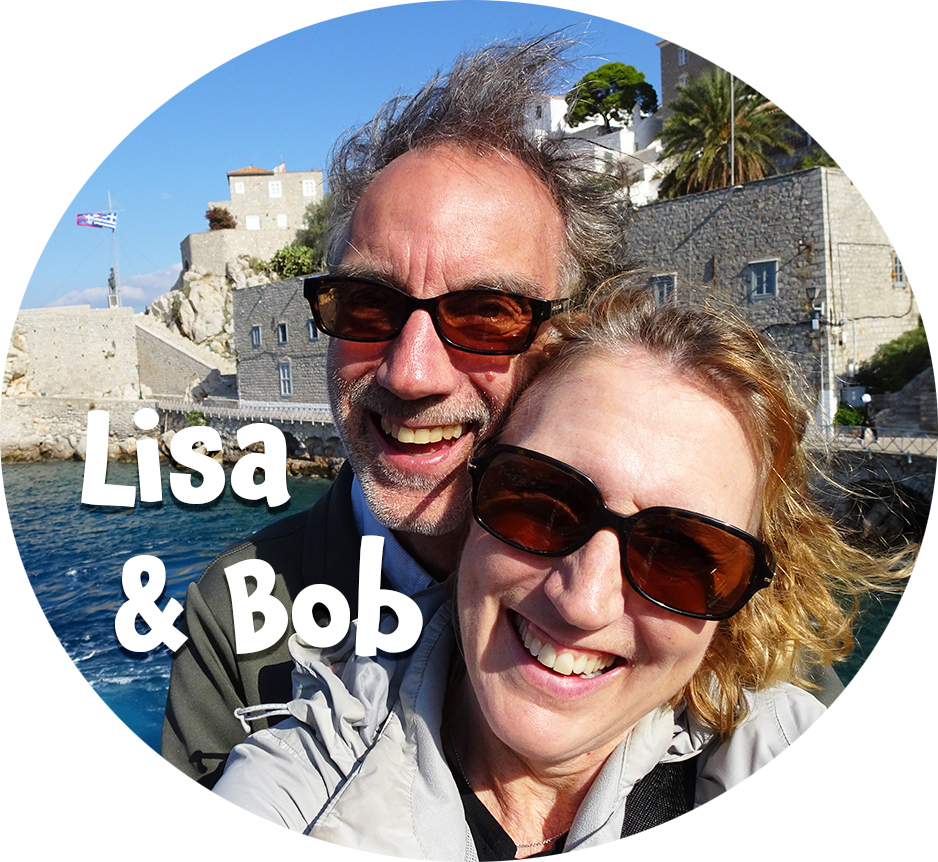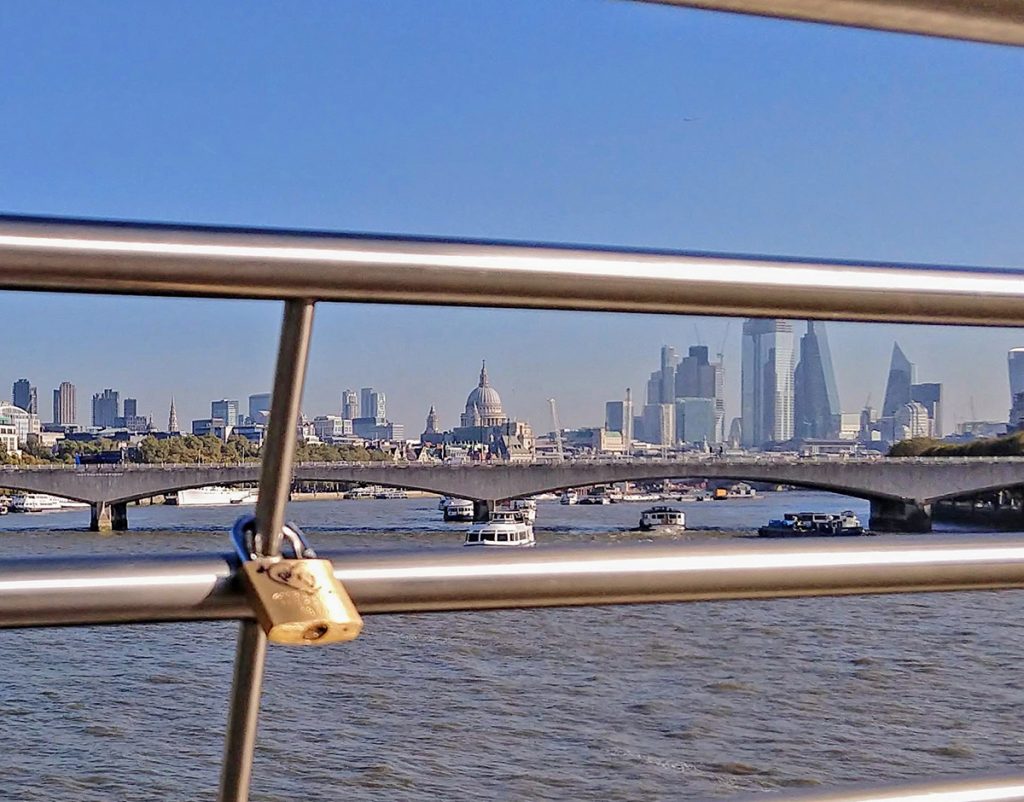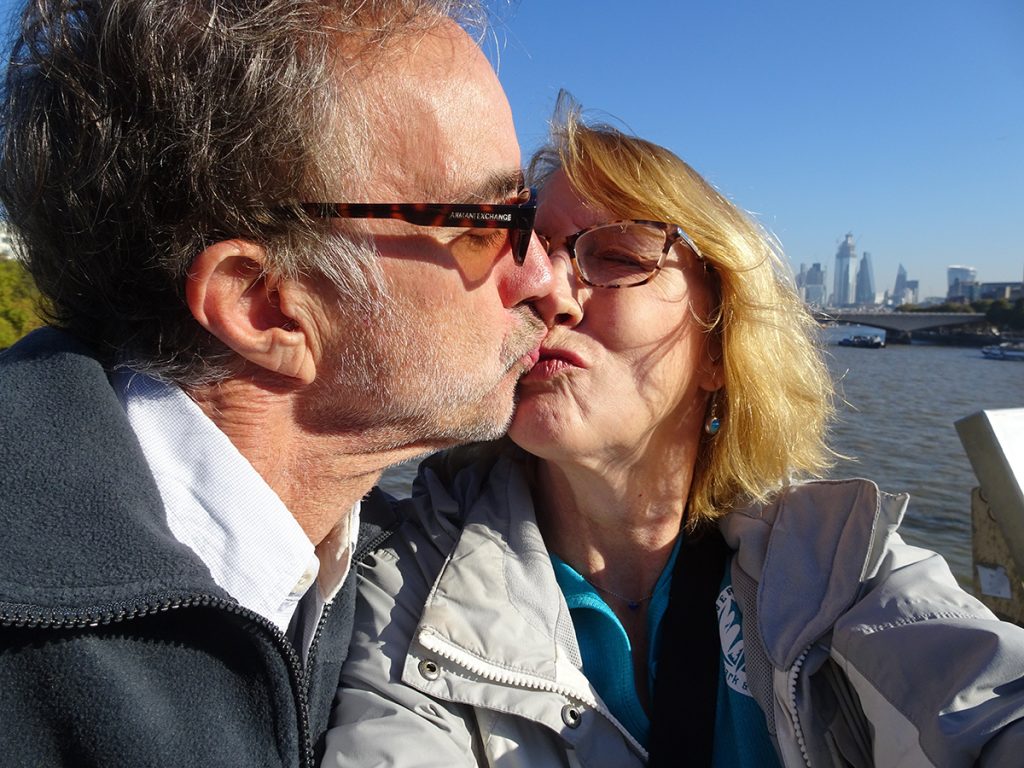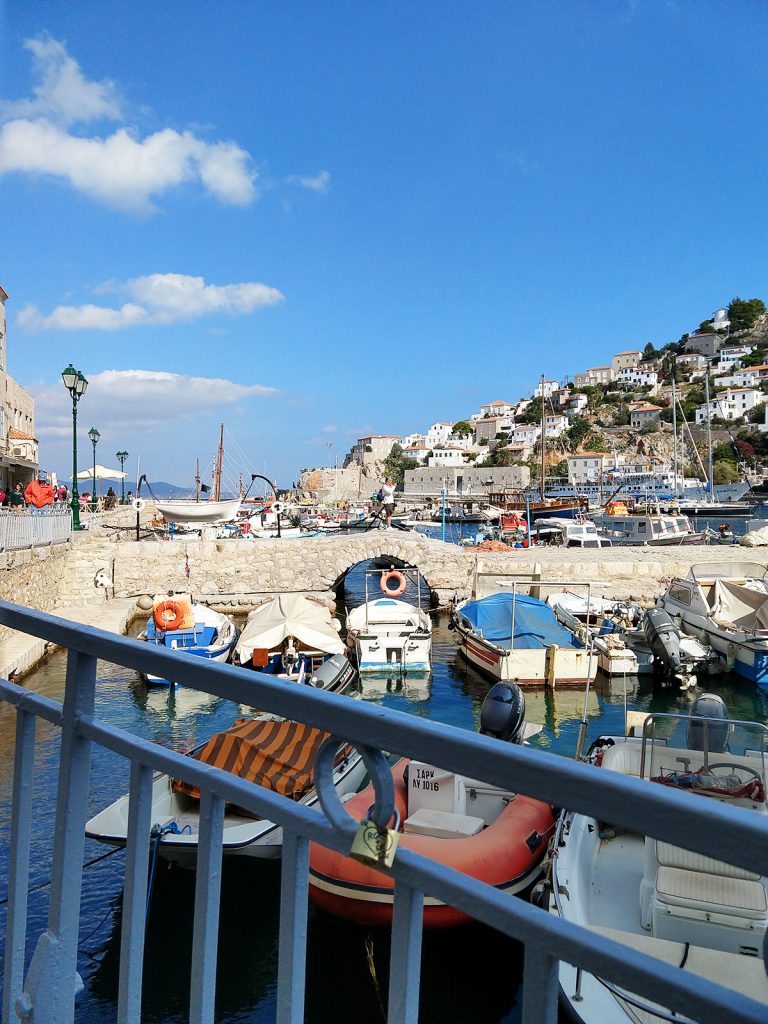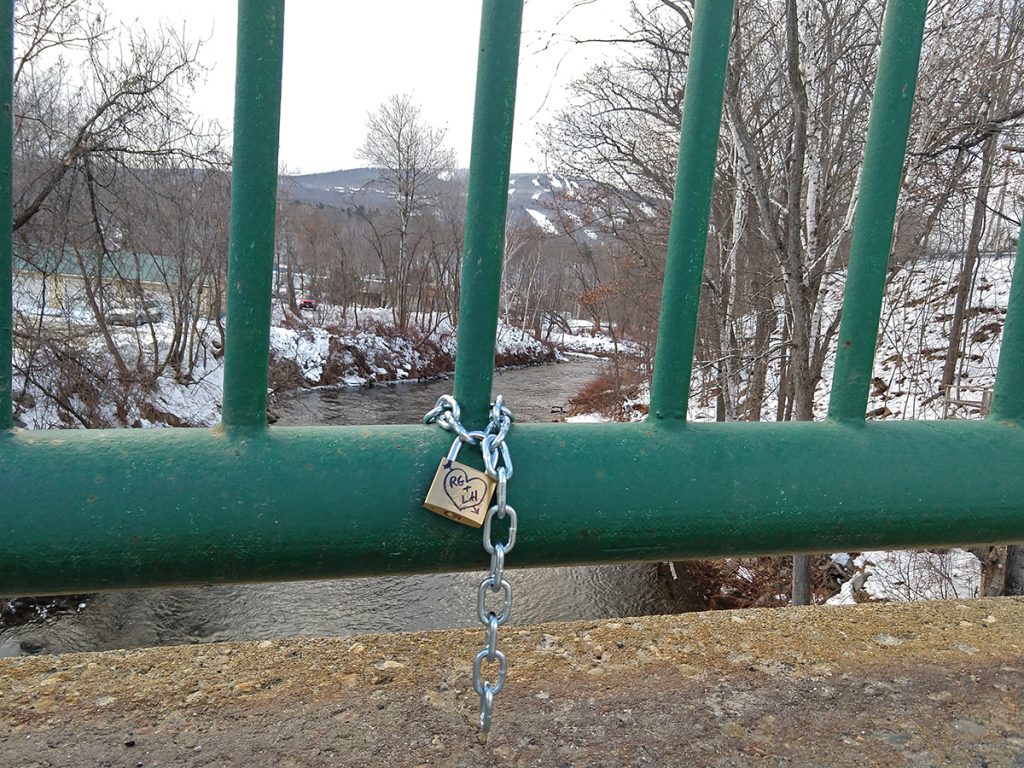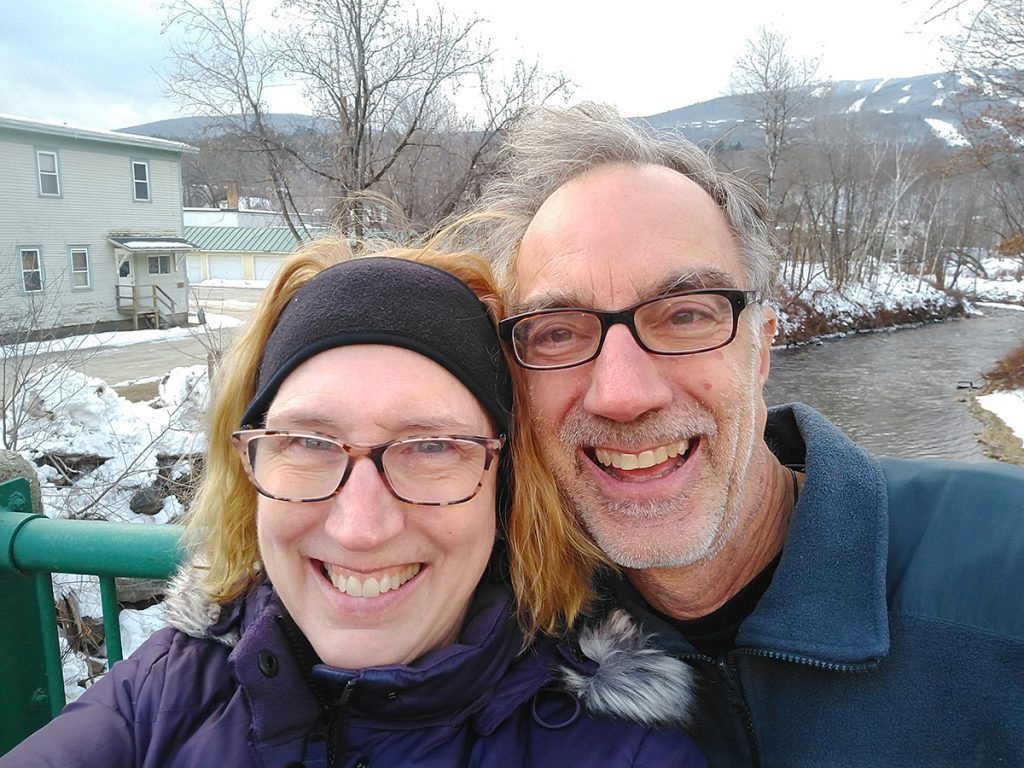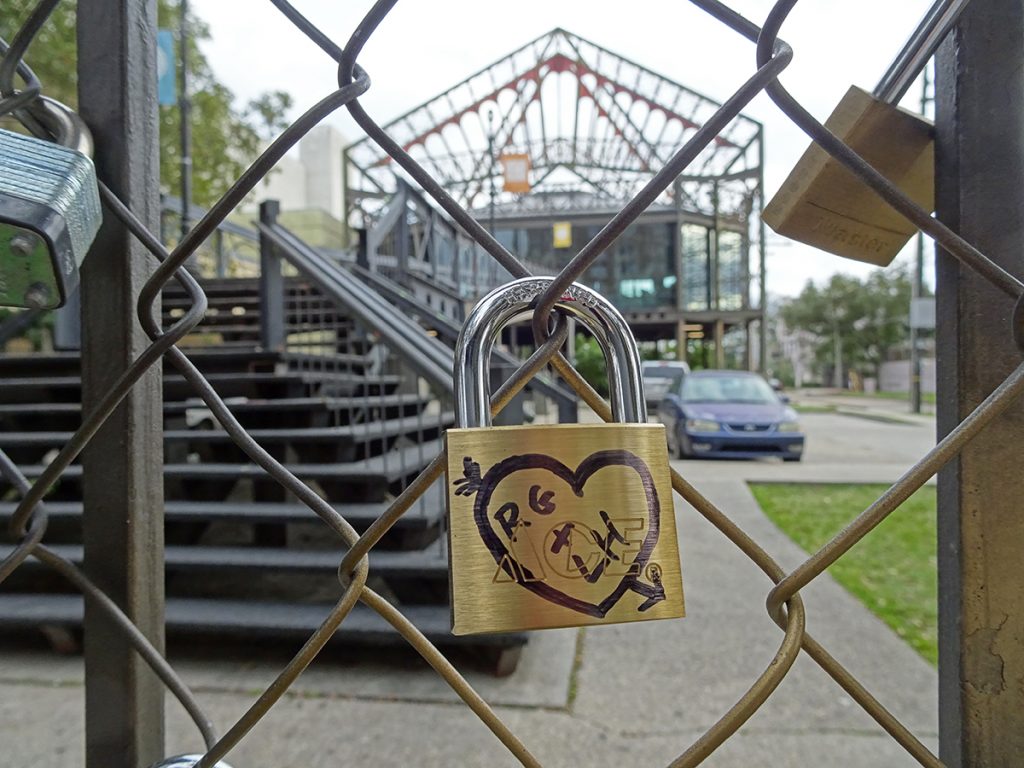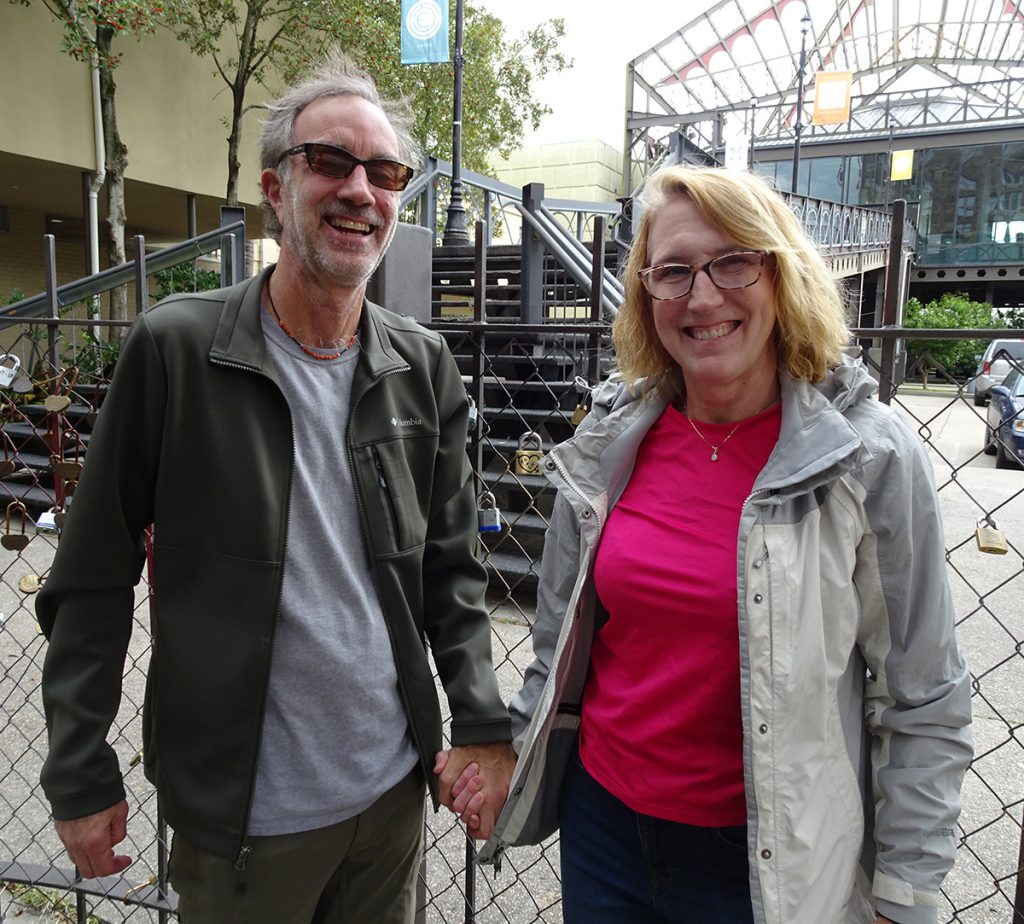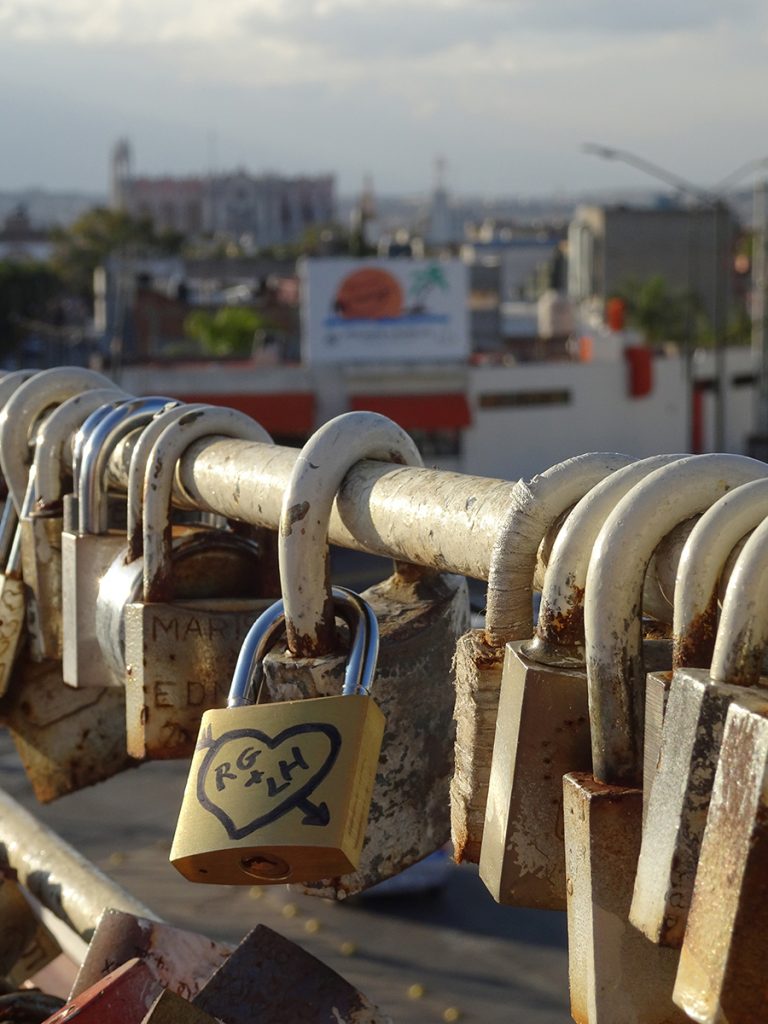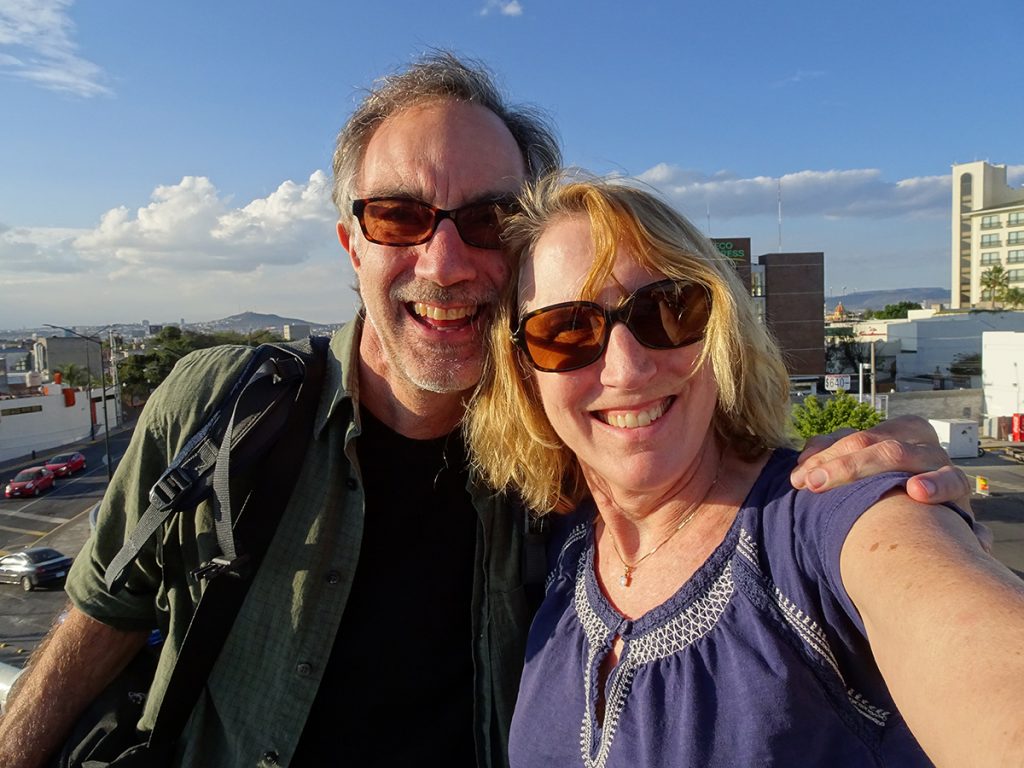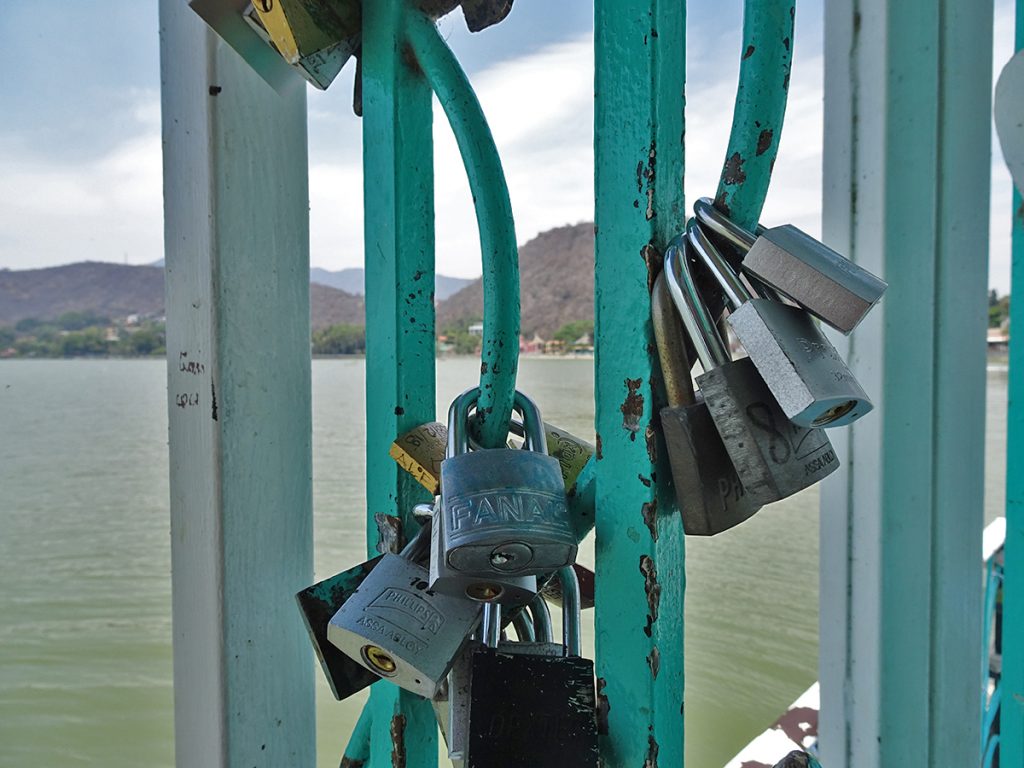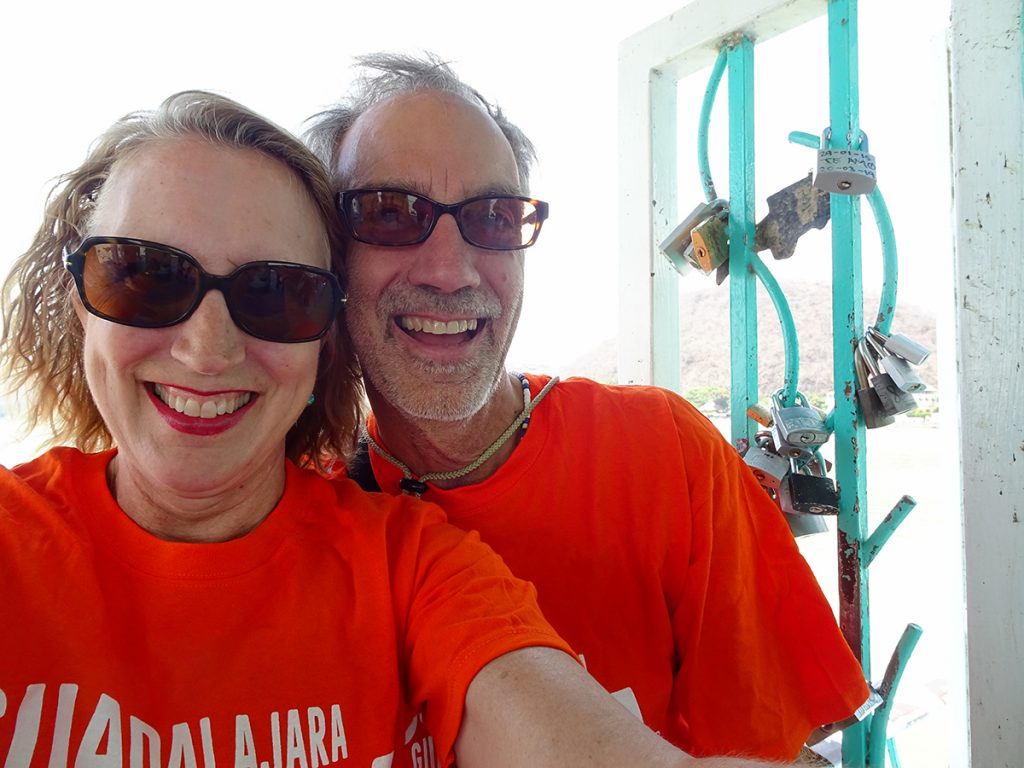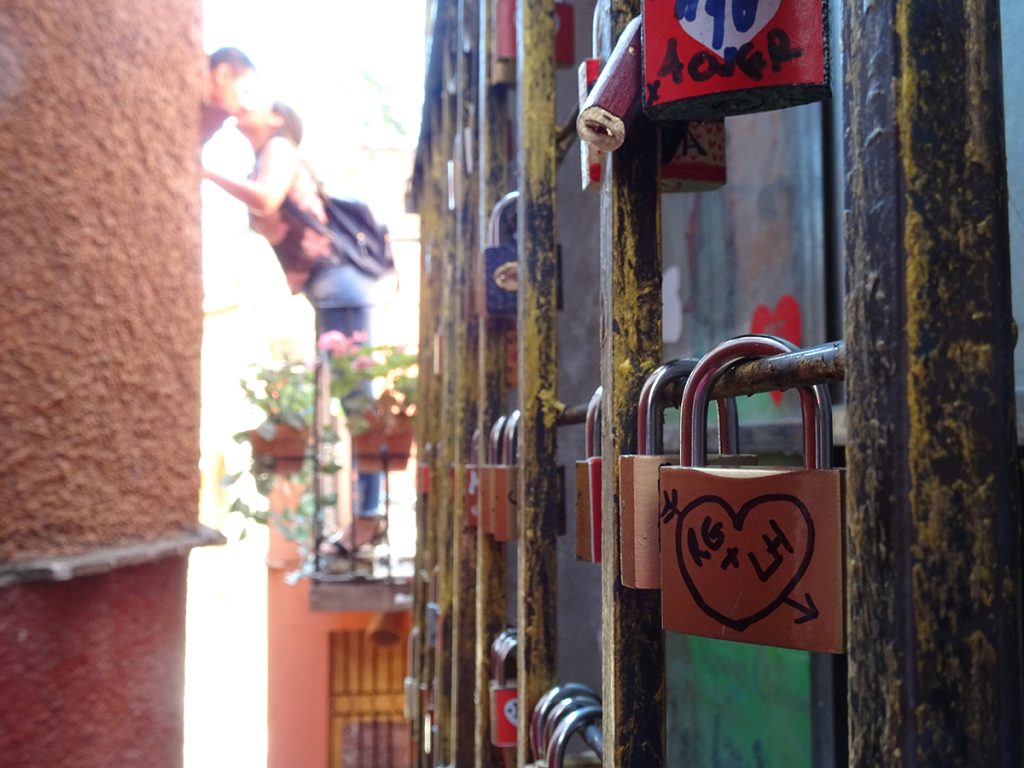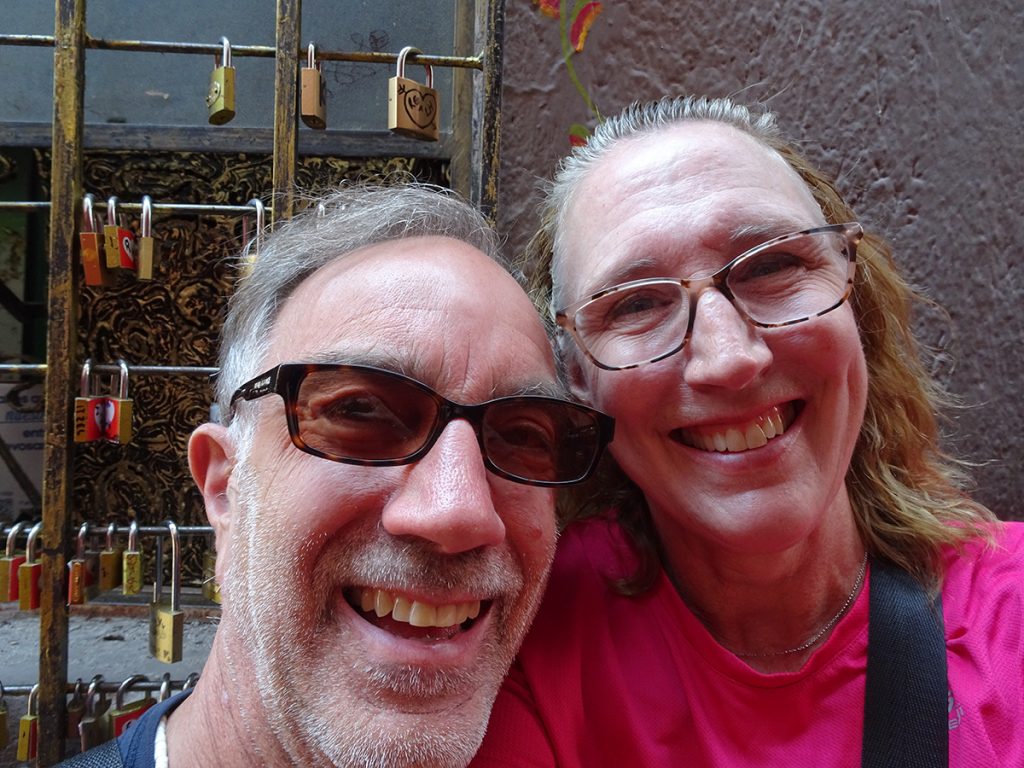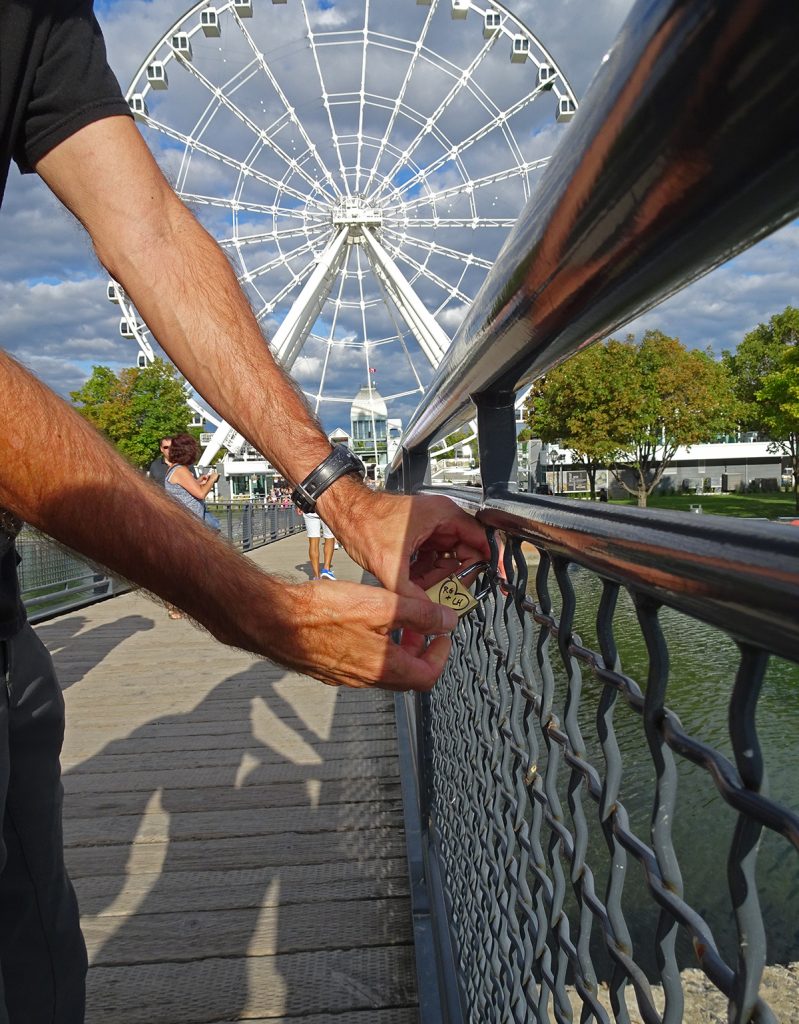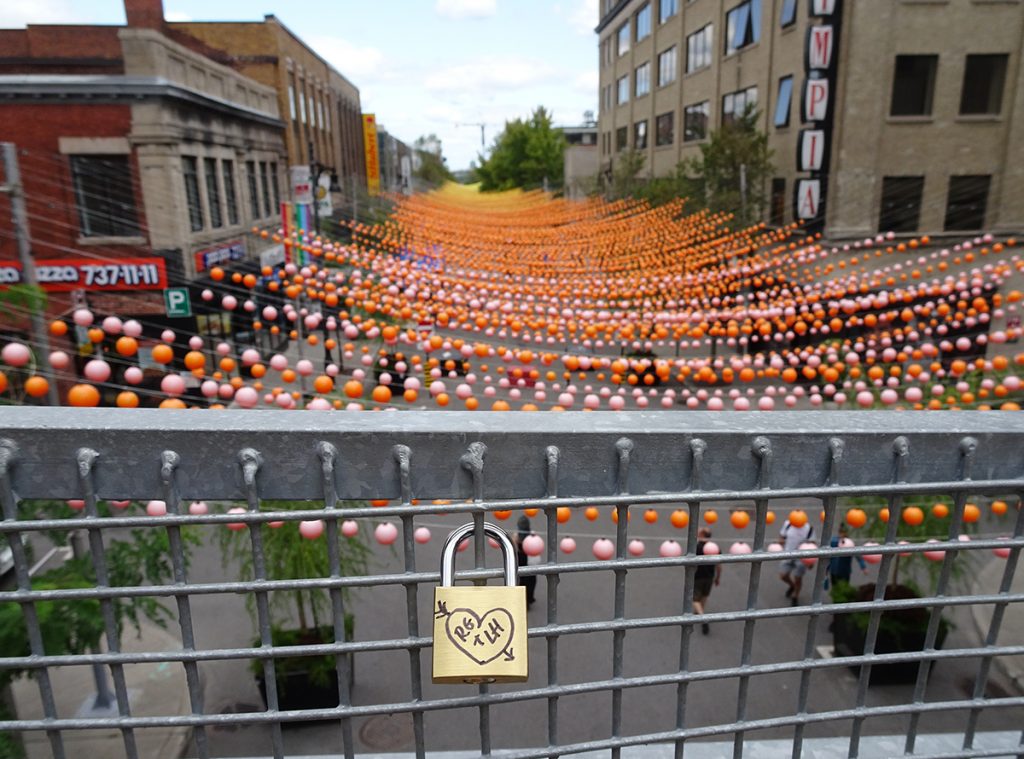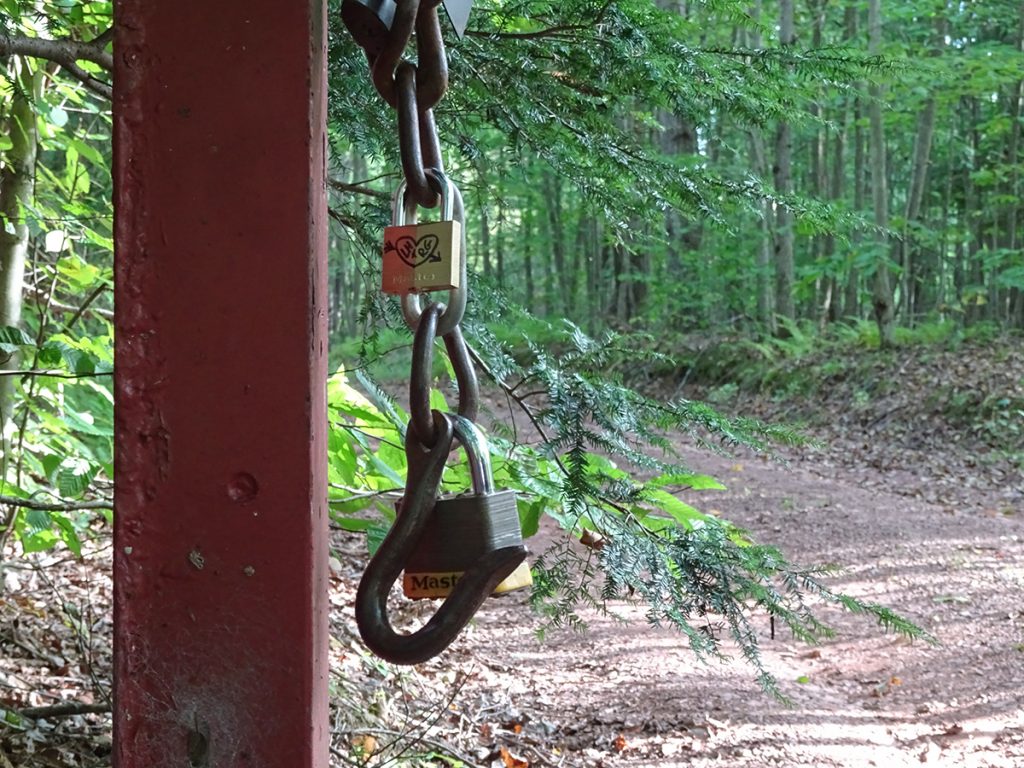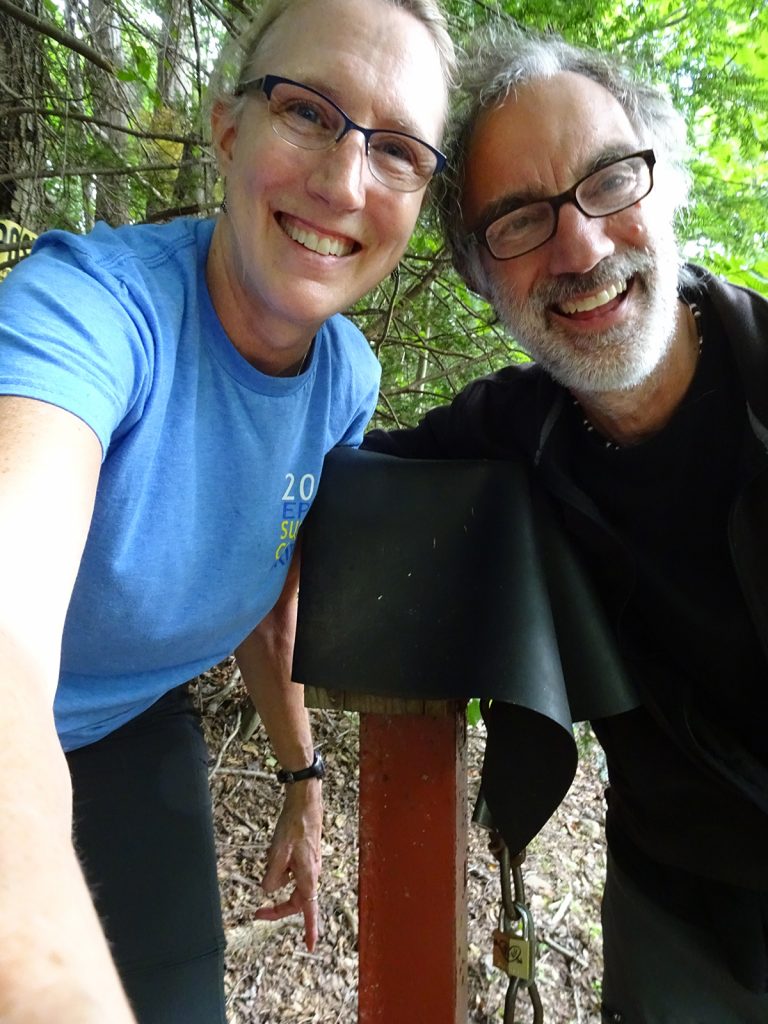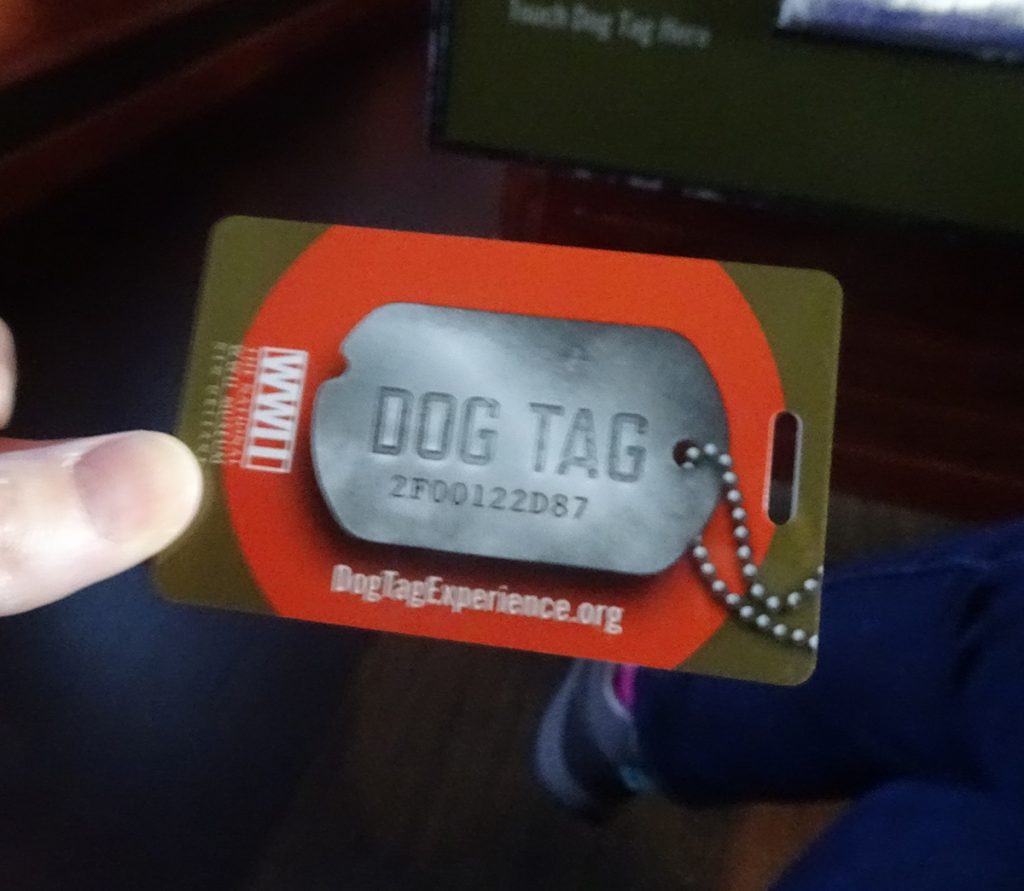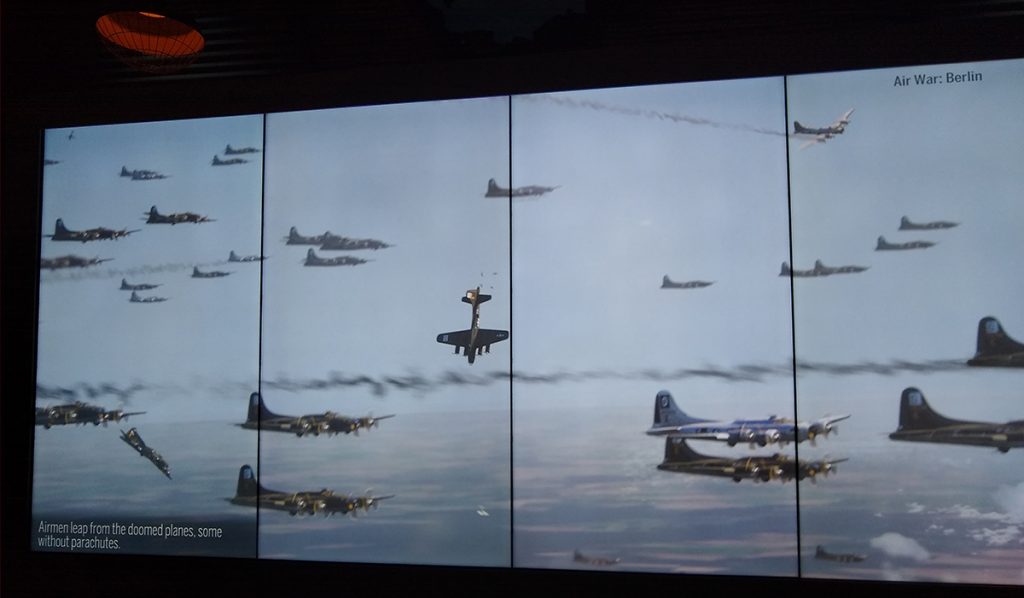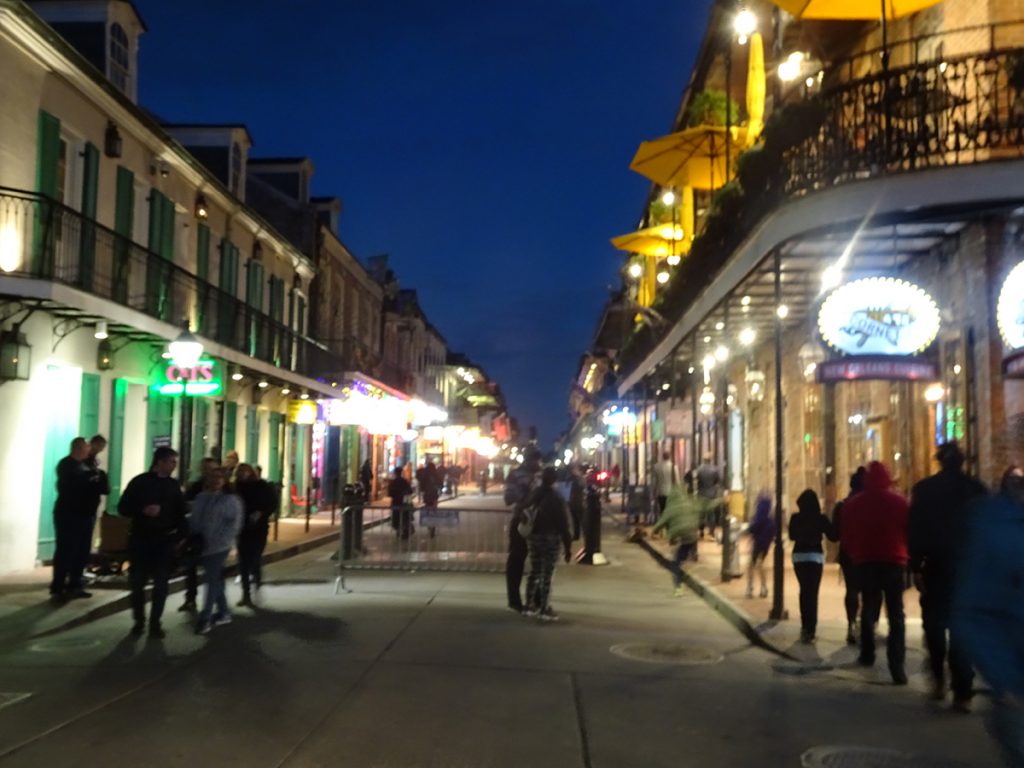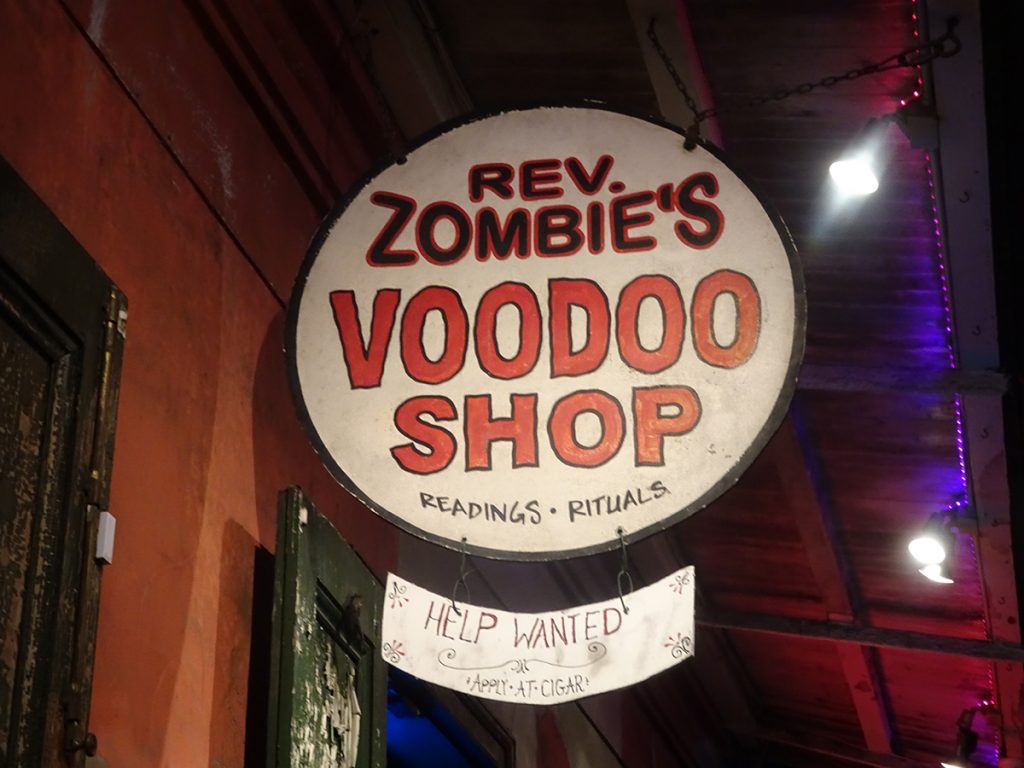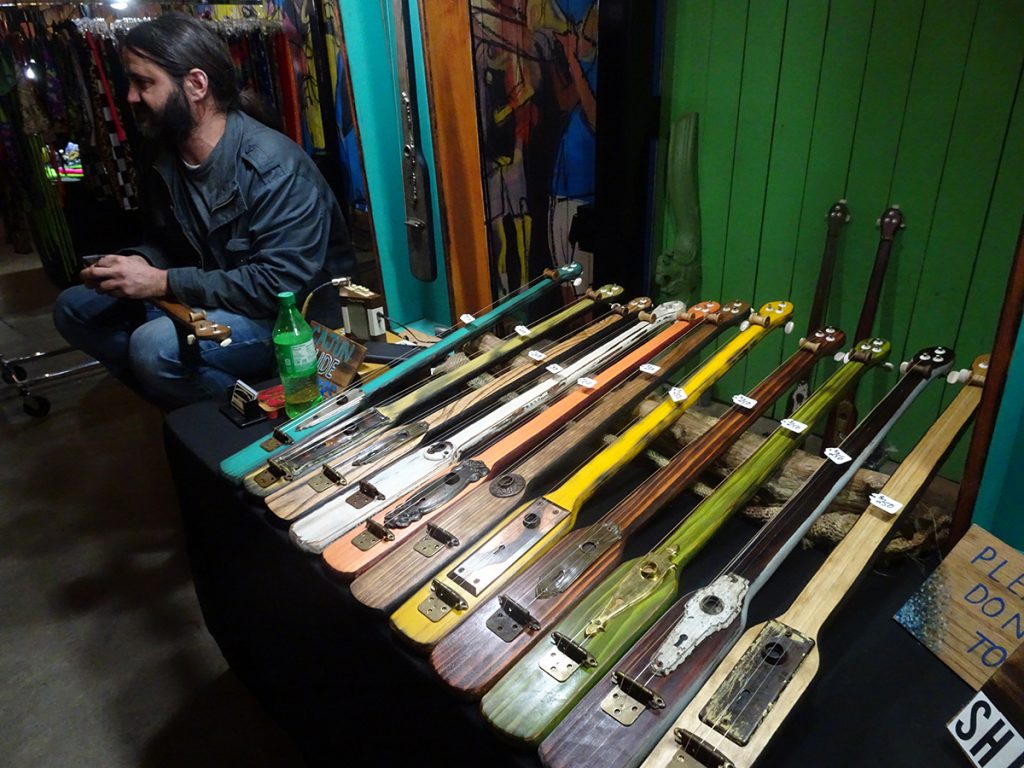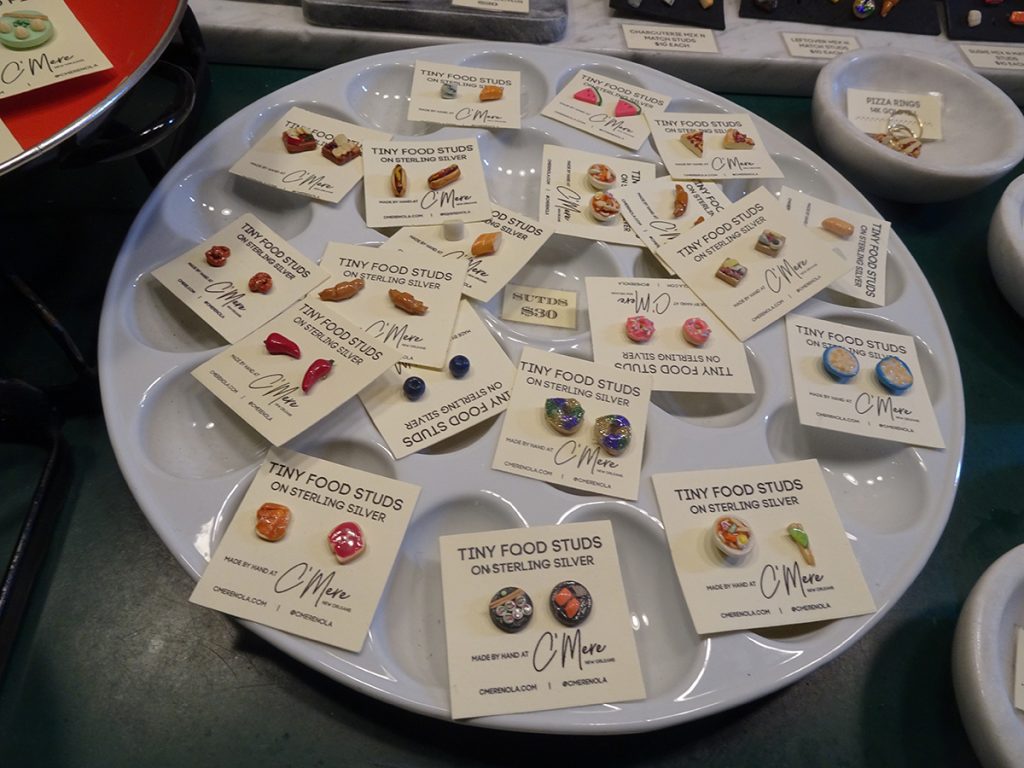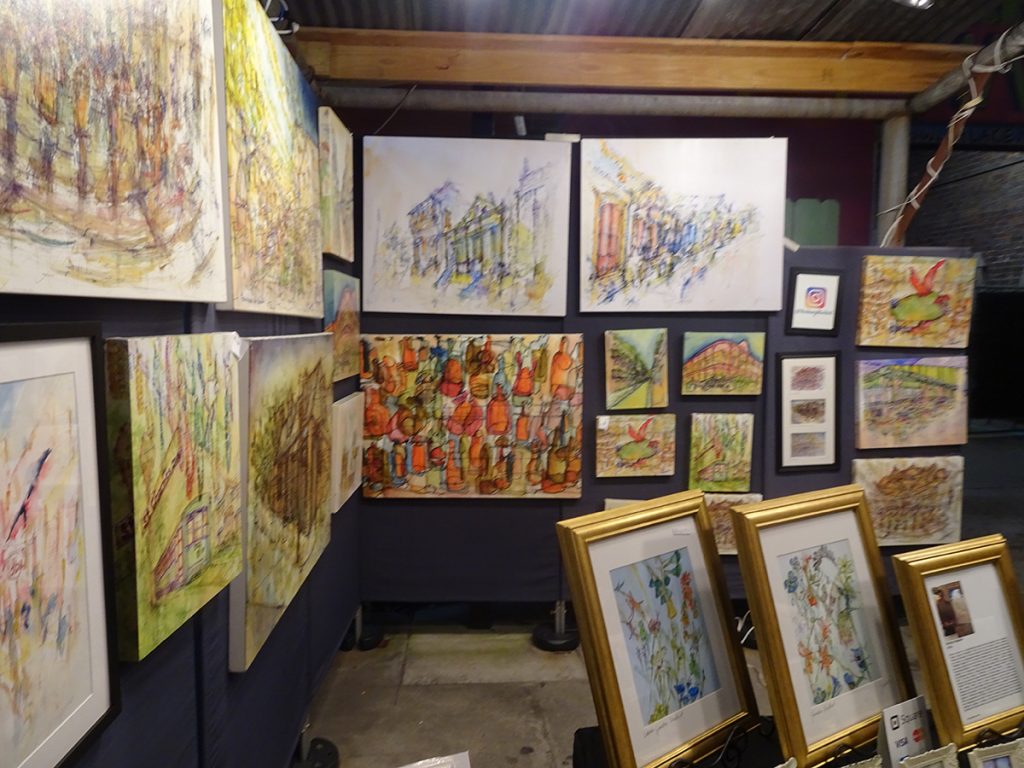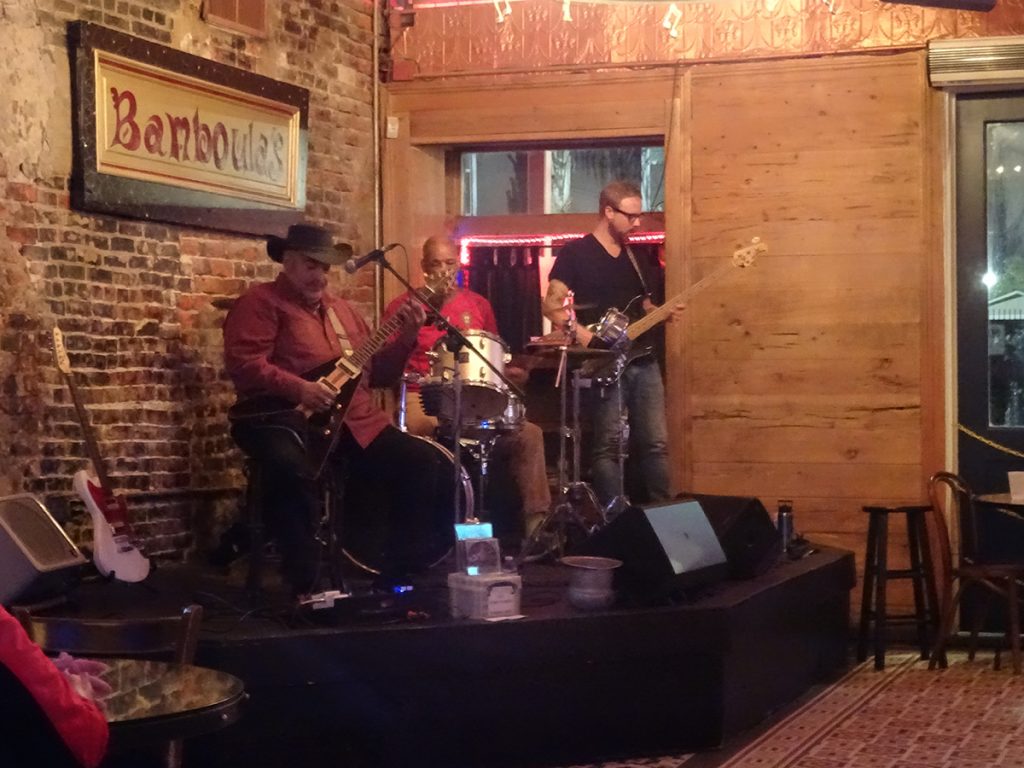Happy Valentine’s Day! We wanted to celebrate the annual day of love by sharing the story of our love locks.
A couple of weeks ago, Bob and I attached a little gold padlock to the new Love Lock Bridge near the Riverwalk in San Antonio to lock our love forever, then kissed and took a selfie to mark the occasion. On our lock was written in Sharpie “RG & LH,” inside a hand-drawn heart pierced by Cupid’s arrow. The bridge was actually a chainlink fence along the San Antonio River, but it was covered with hundreds of locks of other couples declaring their undying love.
It was the 15th time we have declared our forever love by placing a lock on a bridge. Normally we are not super-sentimental people, but love locks are a ritual we have grown to cherish during our travels, leaving our mark on bridges and walls all over the United States, Europe and Mexico (so far).
Paris, France
It all started in the summer of 2016, when I was planning to accompany Gavin’s scout troop on a week in the romantic city of Paris. Before we left, Bob gave me a padlock and asked me to write our initials on it and hang it on the Pont des Arts Bridge, which was famous for having so many lovers’ padlocks affixed to it that it groaned under the weight, and authorities had had to cut them off. He had seen the bridge during a weekend he spent alone in Paris during a business trip, and thought it would be nice to have our own lock there.
Surprised and touched by this rare sentimentality, I happily obliged. After the troop set off for the next leg of their trip, Switzerland, I went down to the River Seine and searched for the love locks. The city had decommissioned the Pont des Arts Bridge in 2015 because of the weight of the locks, so I went to the Pont Neuf. It was covered with thousands of lovers’ padlocks tumbling down the banisters and onto the railings of the river walls beyond. Across the River Seine from where I stood was a magnificent view of the Louvre. I locked our padlock, blew a kiss to Bob across the ocean, and took pictures. I’m sure if the locks get too heavy, authorities will cut them off again. But until then, RG & LH will grace the Pont Neuf in Paris, the city of lovers.
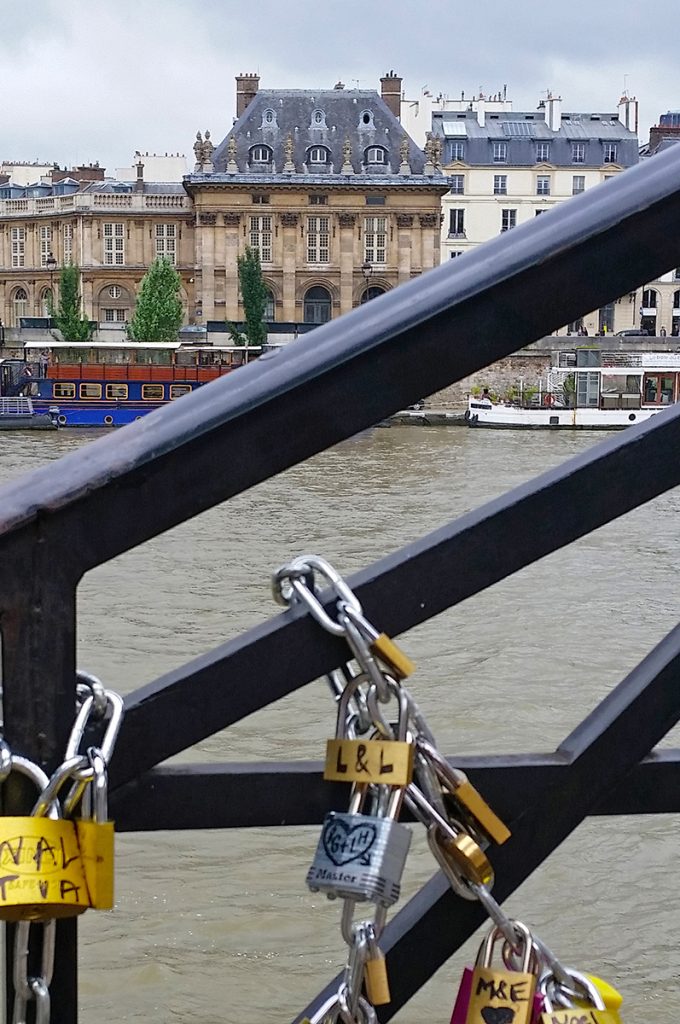
It was a grand, and small, gesture of love. It felt good. It made me think about why I had married this man, what we had experienced together, and how special our life was.
Hamburg, Germany
Three years later, we were visiting my brother Patrick in Hamburg, Germany, and walking along the Elbe River when we saw another bridge covered with lovers’ locks. We didn’t realize the tradition had expanded beyond Paris. Since we were leaving the country the next day, we went and found a hardware store to buy a lock, wrote RG & LH with a Sharpie and enlisted Patrick to hang it for us. A few weeks later, he sent a photo of our lock on the bridge. (Thanks, Pat!)
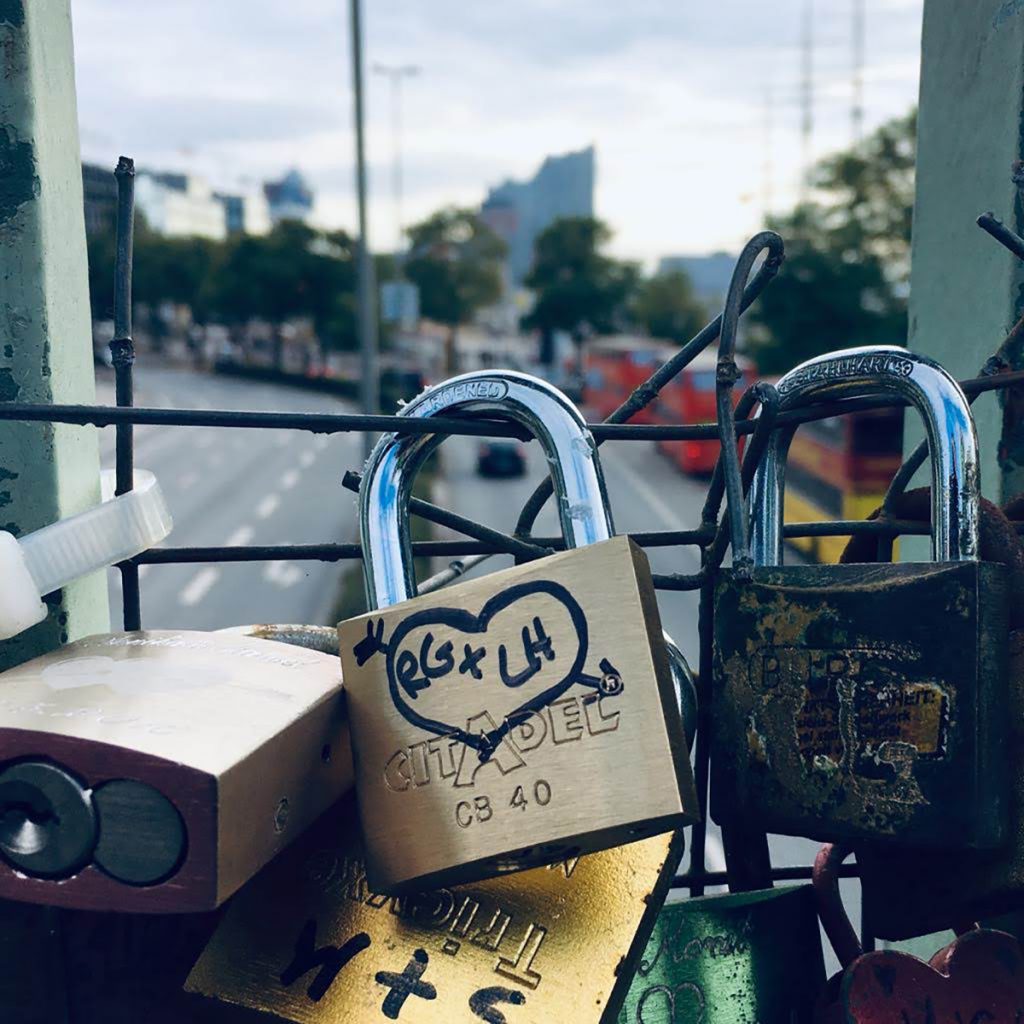
And with that, we were off, searching for love lock bridges, or creating our own, everywhere we went, together or apart. While on a five-week tour through Europe, we hung locks everywhere.
London, England
In London, we strolled across the pedestrian Jubilee Bridge and listened to a street musician playing Caribbean steel drums while we snapped our padlock in a spot all its own and kissed above the Thames River.
Rome, Italy
After a long day of sightseeing as a family in Rome, when Gavin’s and my feet were aching from miles of walking, Bob trekked back in the rain to hang a lock over the Tiber River.
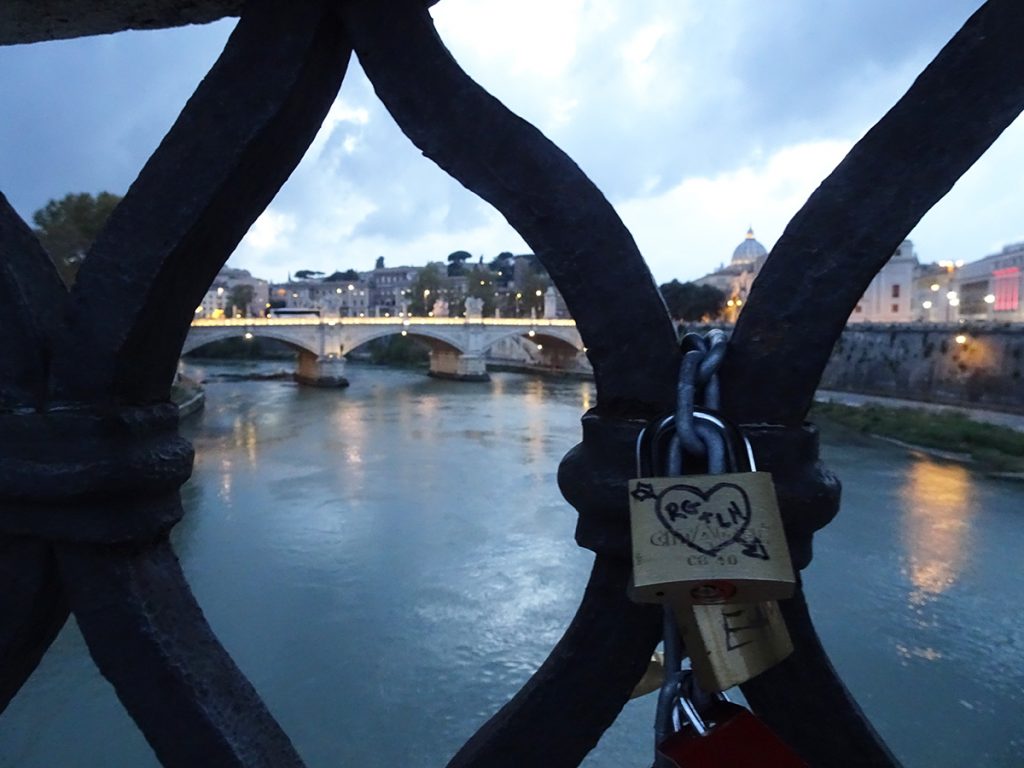
Sorrento, Italy
Farther south in Sorrento, on a solo weekend trip while I was off doing genealogy searching with some Italian cousins, Bob discovered an iron fence with love locks along the Mediterranean coastline about a mile from his hotel during his morning run. He spent the afternoon searching for a padlock and a Sharpie, but a torrential downpour forced him to wait to return until the next morning, when a break in the rain gave him time to quickly walk there and fix the lock in place before heading for the train station.
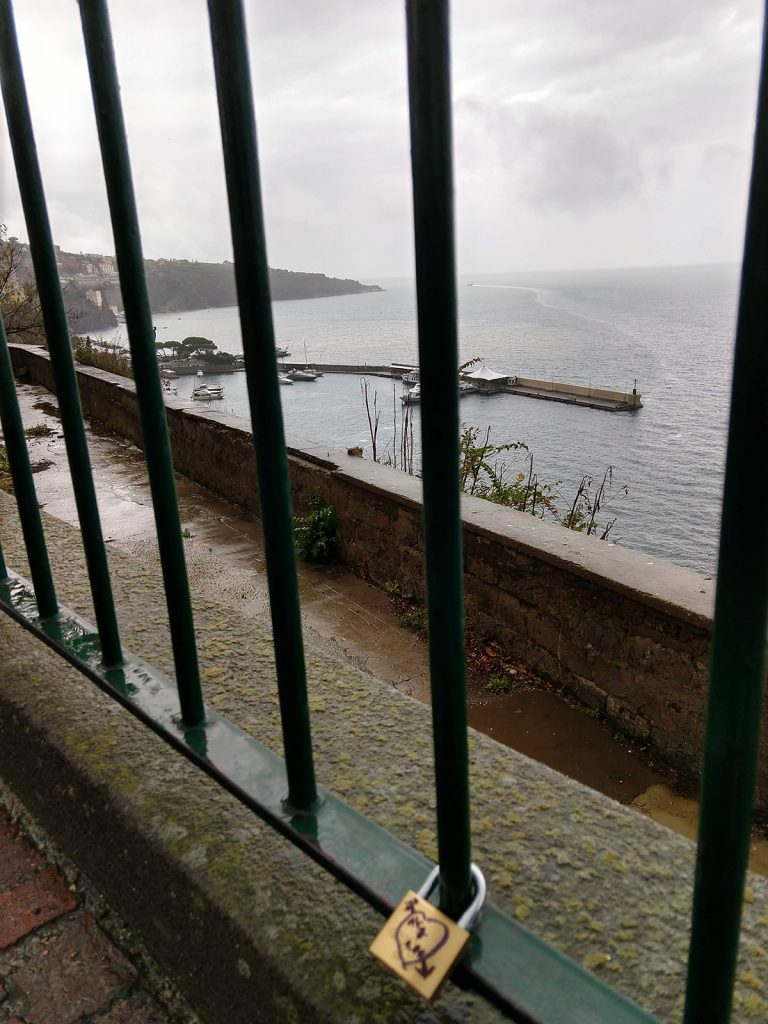
Hydra, Greece
In Greece, during a daylong boat trip, Hydra, an idyllic fishing village where bleached-white houses climb up the mountainside from the azure Mediterranean, offered herself as an entrancingly scenic host to our love lock.
Ludlow, Vermont
The tradition continued when we returned to North America. First, we affixed a love lock to a bridge in Ludlow, Vermont, where we have our second home.
New Orleans, Louisiana
Then we headed down to live in Mexico for the first six months of 2019. During a two-night on break the road trip south, we took the streetcar to hang a lock on a chain-link fence in New Orleans, under a banner that read Love Locks NOLA in front of the Eiffel Society, a club built from parts of a former Eiffel Tower eatery.
Leon, Mexico
When we came to Mexico in January 2019, the first city we stayed in was Leon, where we found the Puente Del Amor (love locks bridge) at one end of the Causeway of Heroes, a wide pedestrian walkway that serves as the gateway into the old city. After spending an afternoon looking for ferreterias (hardware stores) to buy a padlock, we put our lock through the padlock of another lock at the top. The bridge looked down upon a highway, with mountains in the distance.
Lake Chapala, Mexico
We never found a good spot in Tlaquepaque, where we lived for four months, or Guadalajara, the city next door. But we visited beautiful Lake Chapala, half an hour south, for a day trip and walked out to the end of a fishing pier to hang our lock on a rusted turquoise railing overlooking Mexico’s largest freshwater lake. On the way, we had been stopped by announcers for a local radio station who were broadcasting live, and thus posed for the obligatory selfie in our new orange Guadalajara T-shirts.
Guanajuato, Mexico
By far the most interesting place to hang our lock was the magical town of Guanajuato, where there’s an alley so narrow that people can kiss from across two balconies. There’s a tragic legend of a young man who was killed for stealing a kiss from the daughter of a rich man. We put up our lock and kissed across the alley. (Fortunately, Bob survived.)
Montreal, Canada
We lived in Vermont during summer 2019, and took a couple of trips to Montreal, Canada, hanging one lock on a bridge overlooking Gay Village and the other on a small bridge in the main pedestrian area along the St. Lawrence River, looking out at a huge Ferris Wheel.
The Farm, Cascade, Pennsylvania
When we visited The Farm, the family homestead in the mountains of Central Pennsylvania where Lisa’s paternal grandmother grew up, we hung a love lock from the rusty metal rope that secures the entrance to the old lane.
Thwarted
We were occasionally thwarted in our efforts. In the beach town of Cambrils, Spain, there was no official Love Locks bridge, so we scouted the promenade along the ocean but never found a spot where we could thread a padlock. There was an official Love Locks spot in Barcelona, but we didn’t have time to visit it. We have looked several times while in Burlington, VT, but have not yet found a spot for a padlock.
Part of the tradition of the Love Locks is to throw the keys into the river to seal your eternal love, but we don’t do that because we don’t think it’s good for the health of the fish or the river. Thus we still hold all the keys to each other’s hearts.
Our Love Locks Map
Click on each pin to see an image of the lock in its home!
Up Next …
We have just arrived in Mexico City and are looking for a place to hang our 16th lock. We’ll keep you posted!
Enjoy the video of our love locks experiences on the Messy Suitcase YouTube Channel. Happy Valentine’s Day!
